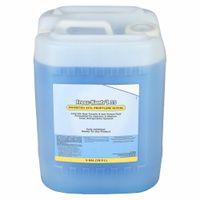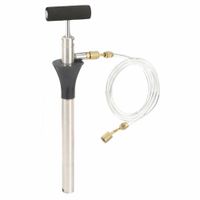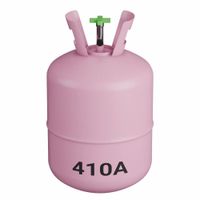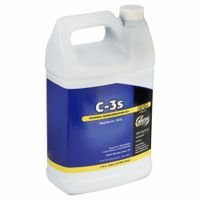Call +(254) 703 030 000 / 751 483 999 / 721 704 777
- Home
- Hvac And Refrigeration
- Refrigerants Glycols Lubricants
.....Read More
Frequently Asked Questions
What are the different types of refrigerants used in HVAC systems?
Refrigerants are crucial to HVAC systems, as they are the substances that absorb heat from one area and release it into another, facilitating cooling or heating. Historically, Chlorofluorocarbons (CFCs) like R-12 were widely used but were phased out due to their significant ozone-depleting potential. Hydrochlorofluorocarbons (HCFCs), such as R-22, served as transitional refrigerants, having less ozone depletion potential than CFCs but still contributing to it. R-22 is also being phased out globally.
Currently, Hydrofluorocarbons (HFCs) like R-410A and R-134a are prevalent. They do not deplete the ozone layer but are potent greenhouse gases, contributing to global warming. As a result, there's a push to transition away from HFCs towards refrigerants with lower global warming potential (GWP).
Natural refrigerants are gaining popularity due to their minimal environmental impact. These include hydrocarbons (HCs) like propane (R-290) and isobutane (R-600a), which have very low GWP and no ozone depletion potential, but are flammable. Carbon dioxide (R-744) is another natural refrigerant with very low GWP, non-flammable, but operates at high pressures. Ammonia (R-717) is efficient and has zero GWP and ozone depletion potential, but it is toxic and flammable, limiting its use primarily to industrial applications.
The HVAC industry continues to evolve, with ongoing research and development focused on creating more environmentally friendly and energy-efficient refrigerant solutions.
How do you choose between propylene glycol and ethylene glycol for hydronic heating systems?
When choosing between propylene glycol (PG) and ethylene glycol (EG) for hydronic heating systems, the primary consideration is toxicity. Ethylene glycol is highly toxic if ingested, making it a poor choice for systems where accidental ingestion or leakage could pose a risk, such as in residential or food-processing facilities. Propylene glycol, while not entirely non-toxic, has a much lower toxicity profile and is generally considered food-grade, making it a safer option for such applications.
Performance-wise, ethylene glycol typically offers slightly better heat transfer efficiency and lower viscosity at colder temperatures, which can be advantageous in some industrial settings where high performance is critical and safety protocols are stringent. However, modern inhibited propylene glycol formulations have significantly closed this performance gap.
Cost is another factor. Ethylene glycol is generally less expensive than propylene glycol. Therefore, in applications where toxicity is not a concern (e.g., closed-loop industrial systems with no potential for human contact or environmental release), and cost is a major driver, EG might be preferred.
Ultimately, the decision hinges on the specific application's safety requirements, the potential for human or environmental exposure, and the balance between performance and cost. For most commercial and residential hydronic heating systems, the lower toxicity of propylene glycol makes it the preferred and safer choice.
What is the purpose of glycol testing in HVAC systems?
Glycol testing in HVAC (Heating, Ventilation, and Air Conditioning) systems is crucial for maintaining optimal performance, efficiency, and longevity. Glycol, often a mixture of ethylene or propylene glycol with water, is used as a heat transfer fluid in closed-loop systems to prevent freezing in cold climates and to provide corrosion protection.
The primary purposes of glycol testing include:1. **Freeze Protection Verification**: Regular testing ensures the glycol concentration is at the correct level to provide adequate freeze protection for the system, preventing costly damage to pipes and equipment from ice formation during cold temperatures.
2. **Corrosion Inhibition**: Glycol solutions often contain corrosion inhibitors. Testing monitors the concentration and effectiveness of these inhibitors to prevent corrosion within the system, which can lead to leaks, reduced heat transfer efficiency, and premature equipment failure.
3. **pH Level Monitoring**: The pH of the glycol solution is important. If the pH is too low (acidic) or too high (alkaline), it can accelerate corrosion or degrade system components. Testing ensures the pH remains within an acceptable range.
4. **Contaminant Detection**: Over time, glycol solutions can become contaminated with debris, scale, or microbial growth. Testing can identify these contaminants, indicating a need for filtration or system cleaning to maintain efficiency and prevent blockages.
5. **Degradation Assessment**: Glycol can degrade over time due to high temperatures or contamination, forming organic acids that are corrosive. Testing helps detect this degradation, signaling when the fluid needs to be replaced or reconditioned.In summary, regular glycol testing is a proactive maintenance measure that safeguards HVAC systems against freezing, corrosion, and inefficiencies, ultimately extending the lifespan of the equipment and ensuring reliable operation.
How often should glycol fluids be tested in hydronic systems?
Glycol fluids in hydronic systems should ideally be tested annually, or more frequently if the system experiences significant temperature fluctuations, leaks, or if there are concerns about its performance. Regular testing assesses glycol concentration, pH levels, and inhibitor effectiveness. Maintaining the correct glycol concentration is crucial for freeze protection and heat transfer efficiency. The pH level indicates the fluid's corrosivity, and a low pH can lead to system degradation. Inhibitors prevent corrosion and scaling within the system; their depletion necessitates fluid replenishment or treatment. Proactive testing helps identify potential issues before they cause costly damage or system downtime, ensuring the longevity and efficiency of the hydronic system.
What are the environmental impacts of refrigerants?
Refrigerants, historically essential for cooling, pose significant environmental concerns primarily due to their impact on ozone depletion and global warming. Chlorofluorocarbons (CFCs) and hydrochlorofluorocarbons (HCFCs), once widely used, are potent ozone-depleting substances, contributing to the thinning of the protective ozone layer, which shields Earth from harmful ultraviolet radiation. While these have been largely phased out, their long atmospheric lifetimes mean their legacy continues to impact the environment.
Hydrofluorocarbons (HFCs), introduced as replacements, do not deplete the ozone layer but are powerful greenhouse gases, with global warming potentials (GWPs) thousands of times higher than carbon dioxide. Their release into the atmosphere, often from leaks or improper disposal, significantly contributes to climate change. Even newer, lower-GWP refrigerants, such as hydrofluoroolefins (HFOs), while a step in the right direction, still carry some environmental footprint, particularly concerning their degradation products in the atmosphere. The transition to more sustainable refrigerants and the implementation of better containment and recovery practices are crucial for mitigating their environmental impact.
How do refrigeration oils work in HVAC systems?
Refrigeration oils are crucial in HVAC systems, primarily serving to lubricate the compressor, the heart of the refrigeration cycle. They reduce friction between moving parts, preventing wear and ensuring smooth, efficient operation. Beyond lubrication, these oils also play a role in heat transfer, helping to dissipate heat generated during compression. They must be miscible with the refrigerant to ensure proper return to the compressor, preventing oil logging in the evaporator which would hinder heat exchange. Different refrigerants require specific oil types to maintain stability and performance, as chemical incompatibility can lead to system breakdown. Modern HVAC systems often use synthetic oils due to their superior thermal stability and lubricating properties, which contribute to the longevity and efficiency of the compressor.
What are the signs that refrigeration oil needs to be replaced?
Refrigeration oil is crucial for the efficient and long-term operation of a refrigeration system. It lubricates the compressor, removes heat, and helps seal the system. Over time, however, this oil can degrade, leading to various issues. Recognizing the signs that refrigeration oil needs to be replaced is vital for preventative maintenance and to avoid costly system failures.
One of the most common indicators is a change in the oil's color or clarity. New refrigeration oil is typically clear and amber. If it appears dark, cloudy, or has a burnt smell, it suggests contamination, oxidation, or thermal degradation. This could be due to excessive heat in the compressor, moisture ingress, or the presence of non-condensable gases.
Another significant sign is the presence of sludge or particles when inspecting the oil. These contaminants can be indicative of wear and tear within the compressor, breakdown of compressor components, or chemical reactions within the system. Sludge can clog vital passages and lead to reduced lubrication, increasing friction and heat.
A noticeable decrease in the system's cooling efficiency or an increase in energy consumption can also point to oil degradation. Contaminated or degraded oil can reduce the heat transfer efficiency of the refrigerant and put more strain on the compressor, leading to higher operating temperatures and reduced performance.
Finally, a qualified technician can perform an oil analysis. This involves taking a sample of the oil and sending it to a lab for testing. The analysis can detect acid content, moisture levels, metal particles, and other contaminants that are not always visible to the naked eye. High acid levels, for instance, indicate the presence of moisture and non-condensables, which can corrode internal components. Regular oil analysis is the most definitive way to determine the oil's condition and whether replacement is necessary, ensuring the longevity and optimal performance of the refrigeration system.
How do you properly dispose of used refrigerants and oils?
Proper disposal of used refrigerants and oils is crucial for environmental protection and regulatory compliance. Refrigerants, often potent greenhouse gases or ozone-depleting substances, must be recovered using certified equipment to prevent release into the atmosphere. This process, known as "refrigerant recovery," involves safely extracting the refrigerant into a dedicated recovery cylinder. Once recovered, the refrigerant should be sent to a licensed reclaimer for recycling or destruction. Reclaimed refrigerants can be reused, reducing the need for virgin production.
Used oils, including compressor oils from refrigeration systems, can contain contaminants that are harmful if released into the environment. These oils should never be poured down drains, onto the ground, or into storm sewers. Instead, they should be collected in leak-proof containers and transported to an authorized used oil collection center or recycling facility. Many automotive service centers and municipalities offer collection points for used oil. Some facilities can re-refine used oil into new lubricants, while others may process it for energy recovery.
Adhering to local, state, and federal regulations for hazardous waste disposal is paramount. These regulations vary, but generally require proper labeling of containers, maintaining records of disposal, and using licensed transporters and disposal facilities. Improper disposal can lead to significant fines and environmental damage. Consulting with environmental agencies or certified waste management companies can help ensure compliance and safe handling practices.
What are the safety precautions when handling refrigerants and glycols?
When handling refrigerants and glycols, it's crucial to prioritize safety due to their potential hazards. Always wear appropriate personal protective equipment (PPE), including safety glasses or a face shield, chemical-resistant gloves (e.g., neoprene or butyl rubber), and long-sleeved clothing to prevent skin and eye contact. Ensure good ventilation in the work area, as refrigerants can displace oxygen and cause asphyxiation, while glycol vapors can be irritating.
Avoid inhaling vapors or mists by using local exhaust ventilation or, if necessary, respiratory protection. Never mix refrigerants or glycols unless specifically instructed, as this can lead to dangerous reactions. Always work in a well-lit area and have an eyewash station and safety shower readily available. When transferring these substances, use designated, clearly labeled containers and avoid overfilling.
In case of a spill, immediately contain and clean it up according to established procedures, using absorbent materials. Dispose of all waste materials properly, following local regulations for hazardous waste. For refrigerants, always recover them using approved equipment to prevent release into the atmosphere. For glycols, ensure proper disposal to prevent environmental contamination. Regularly inspect equipment for leaks and damage, and perform maintenance as needed. Finally, always refer to the Safety Data Sheets (SDS) for specific handling, storage, and emergency information for each product you are using.
How do you maintain and service pumps for refrigeration oils?
Maintaining and servicing pumps for refrigeration oils is crucial for the efficient and long-term operation of refrigeration systems. Here are the key steps and considerations:
Regular Inspection: * Visual Checks: Regularly inspect the pump for leaks, unusual noises, vibrations, or signs of wear and tear on hoses, seals, and connections.
* Oil Level and Quality: Check the oil level and quality. Refrigeration oils can degrade over time due to moisture ingress, contaminants, or thermal breakdown. Discolored or sludgy oil indicates a need for replacement.Oil Sampling and Analysis: * Periodic Samples: Take oil samples at regular intervals (e.g., annually or as recommended by the manufacturer) for laboratory analysis.
* Analysis Parameters: Test for moisture content, acid number, particulate contamination, and viscosity. These parameters provide insights into the oil's condition and potential issues within the refrigeration system.Filtration: * Oil Filters: Ensure the pump has appropriate oil filters to remove contaminants. Regularly inspect and replace these filters according to the manufacturer's guidelines. Clogged filters can restrict oil flow and reduce pump efficiency.Lubrication (if applicable): * Bearings and Moving Parts: For pumps with external lubrication points, ensure that bearings and other moving parts are adequately lubricated with the correct type of lubricant.Pump Cleaning: * External Cleaning: Keep the exterior of the pump clean to prevent dirt and debris from entering critical components.
* Internal Flushing (if necessary): If contamination is suspected, the pump's internal components may need to be flushed with a compatible cleaning agent, followed by a thorough drying process.Seal and Gasket Replacement: * Prevent Leaks: Over time, seals and gaskets can harden or crack, leading to oil leaks. Replace them preventatively or at the first sign of leakage.Motor and Electrical Checks: * Wiring and Connections: Inspect electrical wiring and connections for looseness, corrosion, or damage.
* Motor Performance: Monitor motor current draw and temperature to detect signs of overloading or impending motor failure.Manufacturer's Guidelines: * Follow Recommendations: Always refer to the pump manufacturer's service manual for specific maintenance schedules, recommended oils, parts, and troubleshooting procedures.By adhering to these practices, you can ensure the longevity, efficiency, and reliability of pumps handling refrigeration oils, thereby preventing costly breakdowns and system downtime.





